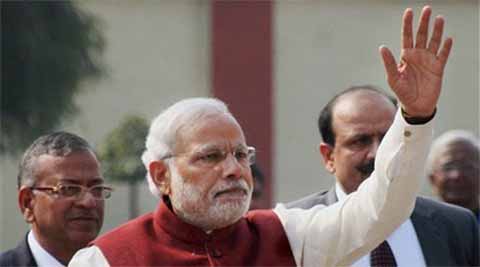New Delhi: Just look at the myriad irrelevant controversies that the ostensibly popular Narendra Modi-led BJP has allowed itself to be dragged into over the last few months. First it was Teachers’ Day in September, then “love jihad” and non-Hindus as “haramzadas” in October, then Sanskrit requirement in November, and now Good Governance Day in December. Good god, what can we expect in January?
Parliament was held up for several days and no bills passed in opposition-ruled Rajya Sabha because of some of these excursions by the Modi government. It has now come to pass that even when the RSS might controversially not be in the wrong, as on voluntary conversions, the opposition is able to stage it as the inevitable rise of communal discord, communal tension, or worse. (My next article will discuss the conversion controversy in detail).
The BJP has literally no one to blame except itself for the rapid loss of “approval” that it is facing at the hands of the electorate. Of course, it is winning elections, but that is not because people love the BJP more, but because they hate the opposition, especially the Congress, even more.
An analogy from the discussion of economic growth rates, which was a favourite topic of the BJP and Prime Minister Modi, might help. Prior to the election (and even post), Congress leaders thumped their chest and said that India, growing at 5 per cent, was the second fastest growing economy in the world. So look at what a fantastic job we have done, so fantastic that we should be elected for another term.
The BJP retorted (and many of us agreed) that this reasoning was disingenuous at best, and downright stupid at worst. What was relevant was not the absolute growth rate of India, or any other country, but the departure of this growth rate from potential. And given that even the Congress agreed that India’s potential growth rate was around 8.5 per cent, the Congress had achieved the impossible by bringing India’s growth rate to nearly half its potential. The voters agreed and the Congress was sent hurtling towards only 44 seats.
The BJP has done fantastically well in the post-May elections. But is this performance not “equivalent” to India growing at only 5 per cent? Had the distractions with a communal flavour not been there, the BJP would have done a lot better than “grow at 5 per cent”. The BJP’s potential was to have at least 5-10 per cent more seats in each of the state elections it has contested, including some seats in Kashmir. With these victories, it could now go about achieving and fulfilling the much-promised growth and governance agenda. And it could have honoured Atal Bihari Vajpayee with greater eloquence and tribute than to call December 25 continued…

